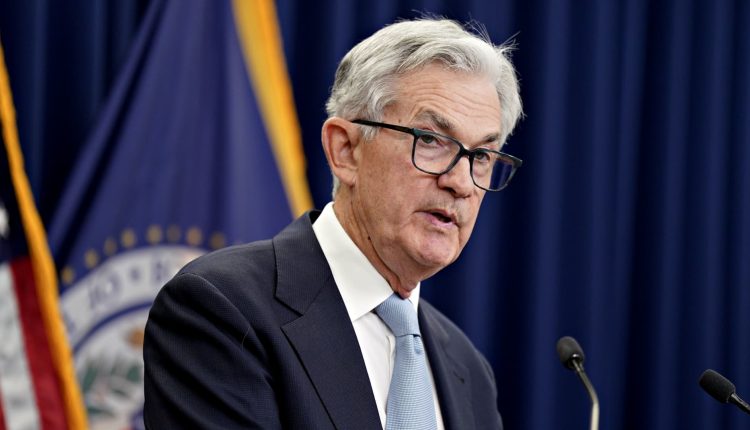Jerome Powell, chairman of the US Federal Reserve, arrives to a news conference following a Federal Open Market Committee (FOMC) meeting in Washington, DC, US, on Wednesday, March 22, 2023.
Al Drago | Bloomberg | Getty Images
Federal Reserve officials at their September meeting differed on whether any additional interest rate increases would be needed, though the balance indicated that one more hike would be likely, minutes released Wednesday showed.
While there were conflicting opinions on the need for more policy tightening, there was unanimity on one point – that rates would need to stay elevated until policymakers are convinced inflation is heading back to 2%.
“A majority of participants judged that one more increase in the target federal funds rate at a future meeting would likely be appropriate, while some judged it likely that no further increases would be warranted,” the summary of the Sept. 19-20 policy meeting stated.
The document noted that all members of the rate-setting Federal Open Market Committee agreed they could “proceed carefully” on future decisions, which would be based on incoming data rather than any preset path.
Another point of complete agreement was the belief “that policy should remain restrictive for some time until the Committee is confident that inflation is moving down sustainably toward its objective.”
The meeting culminated with the FOMC deciding against a rate hike.
However, in the dot plot of individual members’ expectations, some two-thirds of the committee indicated that one more increase would be needed before the end of the year. The FOMC since March 2022 has raised its key interest rate 11 times, taking it to a targeted range of 5.25%-5.5%, the highest level in 22 years.
Since the September meeting, the 10-year Treasury note yield has risen about a quarter percentage point, in effect pricing in the rate increase policymakers indicated then.
10-year Treasury yield
At the same time, a handful of central bank officials, including Vice Chair Philip Jefferson and regional Presidents Raphael Bostic of Atlanta, Lorie Logan of Dallas and Mary Daly of San Francisco, have indicated that the tightening in financial conditions may negate the need for further hikes. Of the group, Logan and Jefferson have votes this year on the FOMC.
Members in favor of further hikes at the meeting expressed concern about inflation. In fact, the minutes noted that “most” FOMC members see upside risks to prices, along with the potential for slower growth and higher unemployment.
Fed economists noted that the economy has proven more resilient than expected this year, but they cited a number of risks. The autoworkers’ strike, for one, was expected to slow growth “a bit” and possibly push up inflation, but only temporarily.
The minutes said consumers have continued to spend, though officials worried about the impact from tighter credit conditions, less fiscal stimulus and the resumption of student loan payments.
“Many participants remarked that the finances of some households were coming under pressure amid high inflation and declining savings and that there had been an increasing reliance on credit to finance expenditures,” the minutes said.
Inflation data points, particularly regarding future expectations, generally have been indicating progress toward the central bank’s 2% target, though there have been a few hiccups.
The Fed received some bad inflation news Wednesday, when the Labor Department said that the producer price index, a measure of inflation at the wholesale level, rose 0.5% in September.
Though that was a bit lower than the August reading, it was above Wall Street estimates and took the 12-month PPI rate to 2.2%, its highest since April and above the Fed’s coveted 2% annual inflation target.
The PPI tees up Thursday’s release of the consumer price index, which is expected to show headline inflation at 3.6% in September, and core excluding food and energy at 4.1%.
Read the full article here

